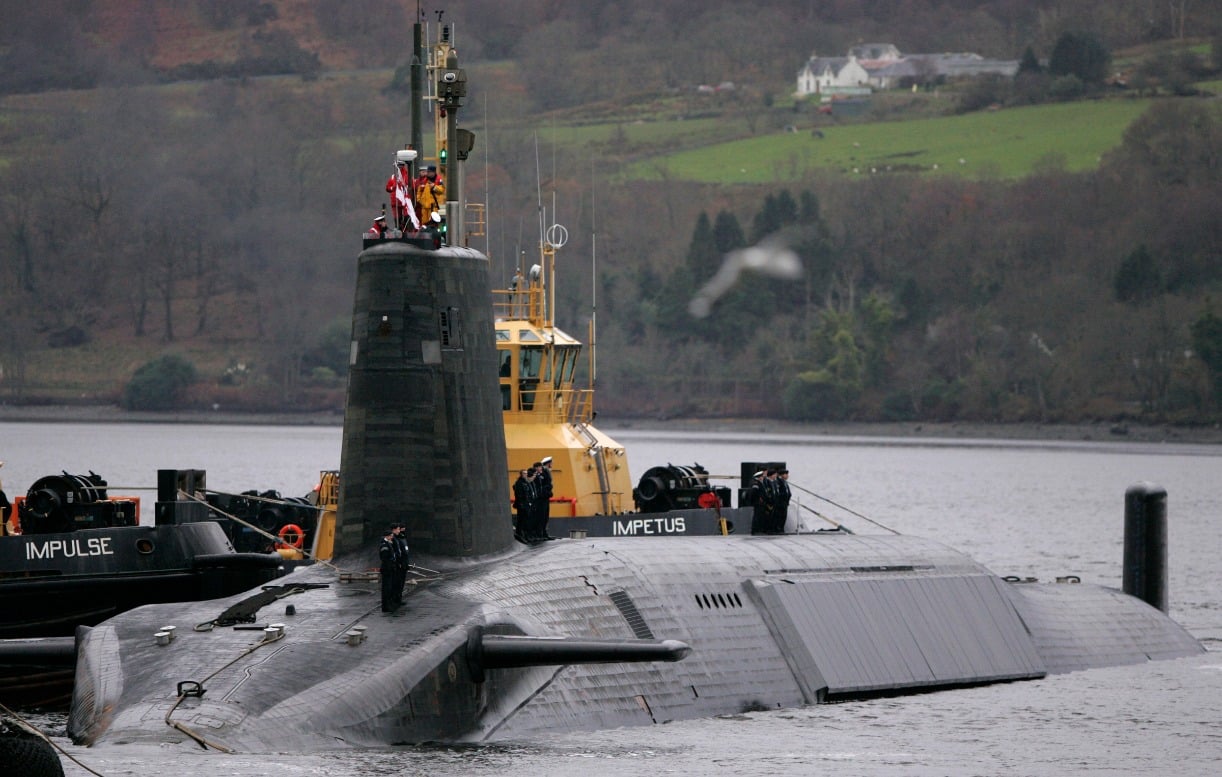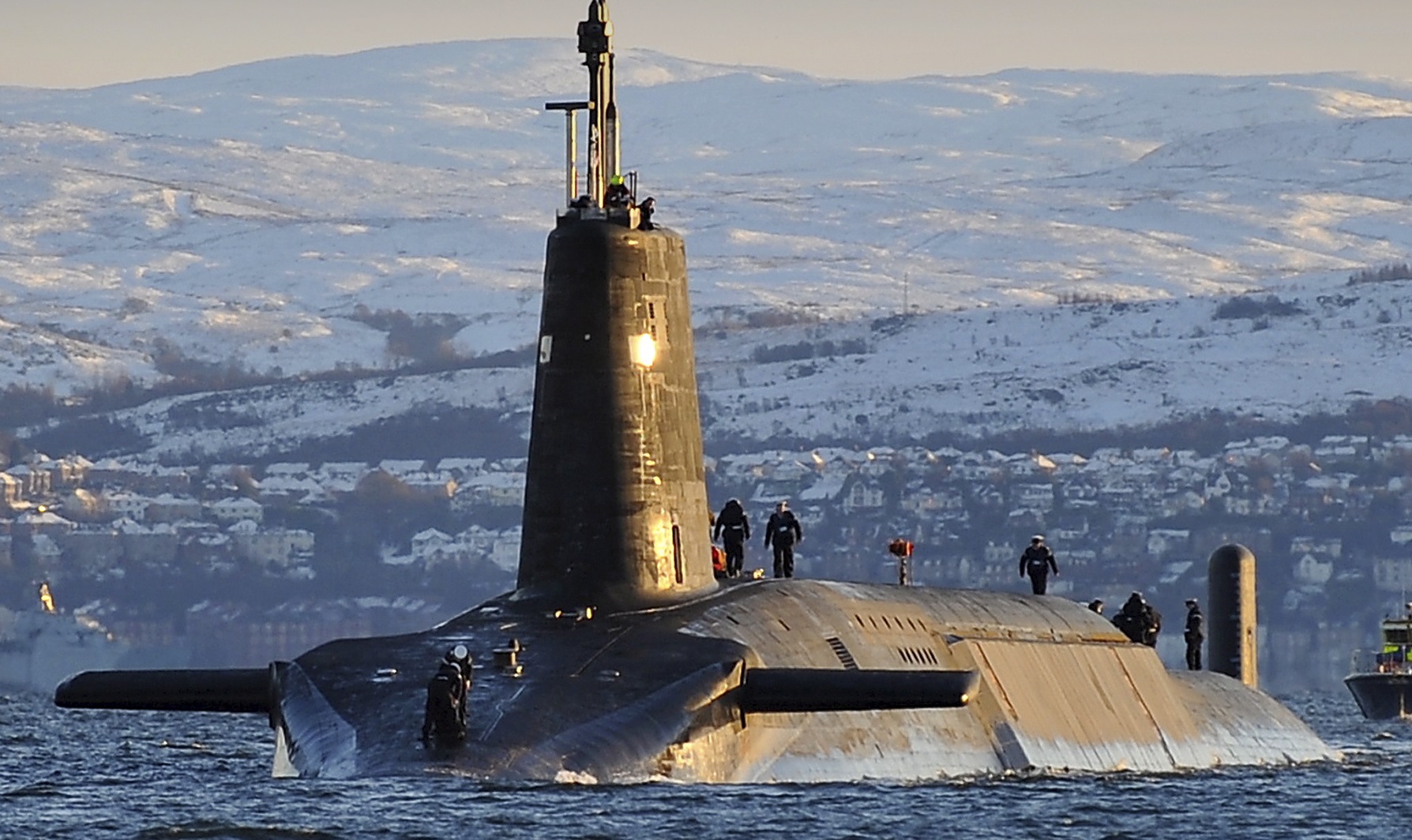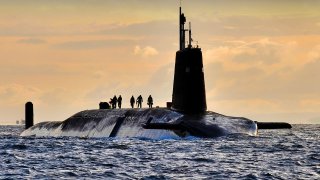No Made in America: Vanguard-Class Sub Has Just 1 Mission Only
The UK's Vanguard-class submarines, despite their age, continue to play a pivotal role in the Royal Navy's strategic defense capabilities, with plans for replacement by the Dreadnought-class in the next decade.
Summary and Key Points: The UK’s Vanguard-class submarines, introduced in the 1990s, are the backbone of the Royal Navy's nuclear deterrent force.

-These submarines carry the UGM-133 Trident II missiles and were developed to replace the older Resolution-class vessels.
-Each Vanguard can carry up to 16 Trident II missiles, with a limited load of 48 nuclear warheads.
The submarines are powered by nuclear propulsion, allowing them to operate for extended periods.
-The Vanguard-class will be replaced by the Dreadnought-class submarines in the early 2030s.
The Enduring Power of the UK’s Vanguard-Class Submarines
The United Kingdom’s Vanguard-class submarines may be aging, yet these nuclear-powered vessels remain the backbone of the Royal Navy. Sometime in the next decade, the UK’s upcoming Dreadnought-class submarines are expected to replace their Vanguard predecessors. However, the Trident missile system incorporated on the Vanguards will be carried over to the new class.
A brief history of the Vanguard-class:
During the Cold War, the UK’s leading submarines were four Resolution-class ships. Each of these vessels was fitted with the UGM-27 Polaris missile, a solid-fueled, nuclear-armed weapon designed originally for the U.S. Navy.
Since the Polaris was launched underwater from a moving platform, it was basically impossible for enemy ships to intercept and take out. As part of the 1963 Polaris Sales Agreement, the UK was able to incorporate this invaluable weapon missile system. While the Resolution ships (and the Polaris missile) were considered top-of-the-line for many years, a subsequent series of submarines and accompanying missiles were conceptualized by the early 1980s.

Ultimately, then-Prime Minister Margaret Thatcher officially requested to purchase the American-made Trident I missiles in 1980. However, the introduction of an enhanced Trident II variant altered this request. In 1982, an agreement between the UK and the U.S. culminated in the delivery of the UGM-133 Trident II.
The Vanguard-class submarines were designed to launch this formidable weapon, developed by Vickers Shipbuilding and Engineering at BAE Systems Maritime-Submarines.
In 1994, the Vanguard-class was officially introduced, including Vanguard (S28), Victorious (S29), Vigilant (S30) and Vengeance (S31). When the class was introduced, all four ships were intended to live out service lives of twenty-five years. Each ship is based at HM Naval Base Clyde, west of Glasgow, Scotland.
Their mission is to ensure nuclear deterrence and, if called upon, fire their warheads at nearly any target on Earth.
The four Vanguard ships are powered by nuclear propulsion, which allows them to sail for periods stretching up to two months without needing to refuel. Although the Vanguard submarines were built bigger to accommodate the Trident missile, a smaller crew of just 132 sailors and officers can fit on board.
The Vanguard submarines can pack a punch:
Each Vanguard can carry up to 16 Trident II missiles, which can sport up to 12 MIRVs. However, the START I treaty agreements limit this number to eight.
As detailed by Naval Technology, the Vanguard ships can technically sport 192 nuclear warheads, but the Royal Navy has limited this number to 48 missiles. “Trident II is a three-stage solid propellant missile with supersonic speed. Weight is 59,000kg.

The US Navy gives the range of the D5 as ‘greater than 7,360km’ but this could be up to 12,000km, depending on the payload mix. The accuracy of strike on the target is given by the Circle of Equal Probability (CEP) value, which is the radius of the circle within which half the strikes will impact.” The Vanguard ships additionally feature sophisticated sensors, including the Thales Underwater Systems Type 2054 composite sonar system. This upgraded system is reportedly so sensitive that it can detect other ships positioned more than 50 miles away.
While the Vanguard ships remain a critical component of the Royal Navy, three Dreadnought successors are already under construction and will likely commission sometime in the early 2030’s.
About the Author: Maya Carlin
Maya Carlin, National Security Writer with The National Interest, is an analyst with the Center for Security Policy and a former Anna Sobol Levy Fellow at IDC Herzliya in Israel. She has by-lines in many publications, including The National Interest, Jerusalem Post, and Times of Israel. You can follow her on Twitter: @MayaCarlin.
Main Image: Creative Commons


